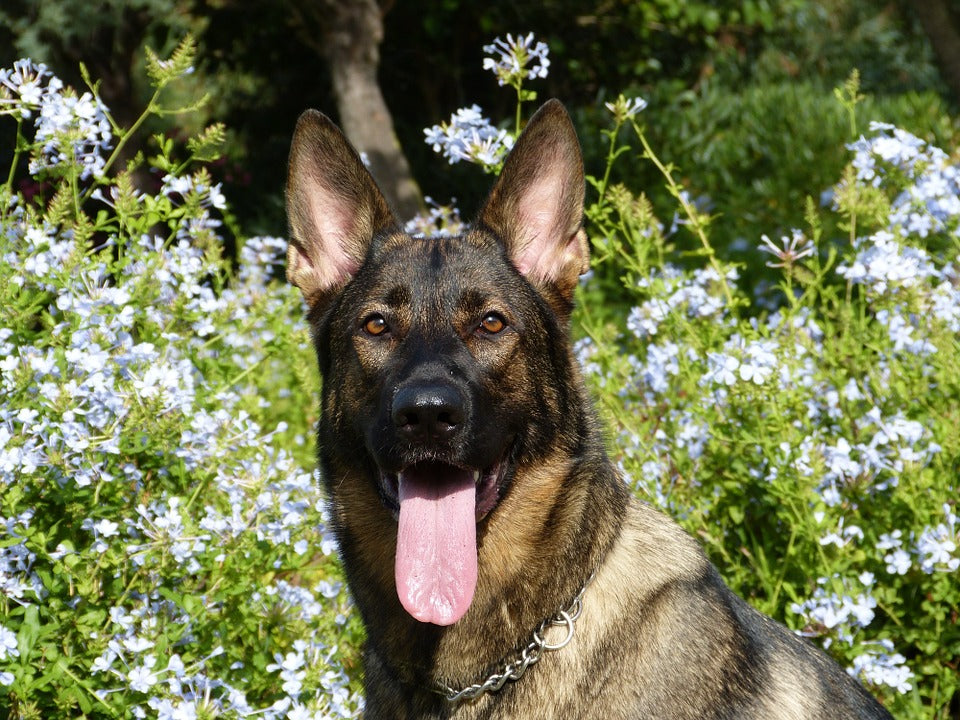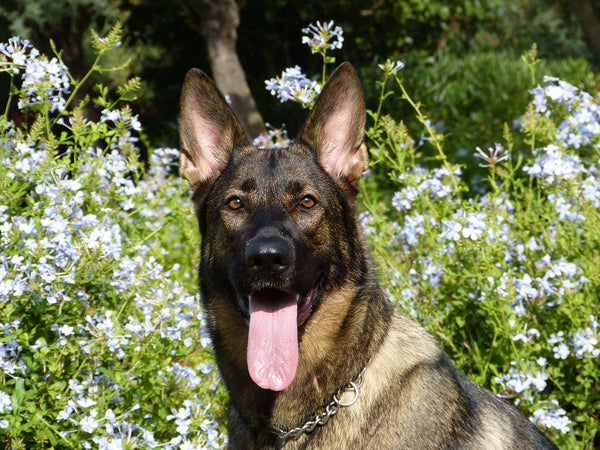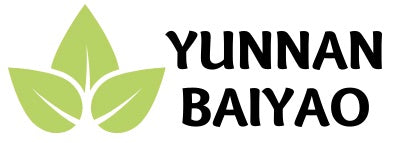
Traditional Chinese Medicine For Keeping Dogs Healthy
Share

As one of the first civilizations to progress during the Agricultural Revolution, China has tremendously contributed a wide variety of excellent and beneficial products, discoveries and practices centering on natural ingredients and elements found in the environment, which are still accepted and utilized up to the present. One of them is the philosophy encompassing the Traditional Chinese Medicine (TCM) that has been in existence for more than 3,500 years and has given assistance and provided cure to billions, from human to animals for centuries.
The primeval philosophies of TCM center on the aspects of nature and balance (yin and yang). It involves a holistic approach to well-being and health through the principle that man’s physique is a part of a larger universe that surrounds him and each of his body systems is patterned according to the five elements in nature - water, metal, wood, fire, and earth. Such belief allows ancient medicinal practitioners to heal their patients with carefully performed therapeutic activities with applications of different herbs, plants, animals, minerals and other naturally occurring substances. With its ancient systems and limited information on its safety, TCM is in a constant bout against the advancements brought by modernity. Nevertheless, its effectivity and positive effects, although challenged by practical science and health professionals due to its lack of adequate studies and research backups, continue to be accepted by many patients seeking alternative and more natural medicines to improve health and cure diseases.
Traditional Chinese Medicine for Dogs
Through time TCM has undergone several advances creating methodologies suitable to the needs of the present generation. Its versatility and extensive kinds of applications that are usually combined these days with contemporary western medicines. Further, making its principles and techniques applicable to humans and animals, particularly dogs. Despite not having a clear and adequate familiarity to ancient healing systems, most present-day veterinarians and animal centers offer their clients methods that involve Traditional Chinese veterinary medicine (TCVM) and other alternative techniques in treating animal ailments.
The principles underlying TCVM to cure dogs has long been in practice, even by the most sophisticated animal physician because it usually brings out positive results in saving and lengthening the lives of our beloved canines.
To learn more about TCVM for your pets’ health, here are the three widely recognized methods for dogs that will keep them active and healthy:
Acupuncture
This is one of the highly-used ancient Chinese healing technique that has been employed over centuries, which provides healing through the concepts of qi (chi) or the life energy that flows within the body that must be retained balance to experience optimal health. Traditional Chinese medicine believes that imbalances in the qi cause sickness and health-related issues. The technique is used to correct any disparity with the qi through the insertion of fine needles within the body’s meridian system, where acupuncture points (acupoints) are situated. This method enhances blood circulation, alleviates pain, and releases tension through penetrating and manipulating acupoints where the nerves and blood vessels come together. The needles will guide and aid qi to equally and fluidly move within the meridian system supporting health.

Acupuncture has proven its efficacy to produce palliative benefits and treat animal ailments, particularly dogs who suffer movement and musculoskeletal problems such as arthritis, slipped disc, joint inflammation, and hip dysplasia. It has also established its functionality in improving dog’s appetite, curing reproductive disorders and hormonal imbalances, neurological illnesses, allergies and lessening the side effects of cancer treatments. Its wide range of curative results makes acupuncture a straightforward and ideal approach for many veterinarians to treat animals. Moreover, the technique has minimal risk factors and no known systematic side effects, even when matched with contemporary or advanced medications like anti-biotics making it an ideal first line of treatment for dogs and humans. Patients who receive acupuncture would immediately experience its soothing effects and will generally sleep during the entire process.
Traditional acupuncture like any other ancient medicinal approach has undertaken many improvements and transitions. Today, aside from using sterilized needles, other modes of acupuncture therapy are being offered to patients accommodating more preferences and ways to obtain its treatment, here are some:
This method employs a small number of electric currents through pairs of needles to stimulate acupoints and increase health restoration. Acupuncturists and TCVM practitioners use this to sick dogs who suffer paralysis, severe pain, and nauseau.
This technique is used to stimulate acupoints via low-intensity and non-thermal infrared lasers. Such a method is known to give relief to a wide variety of pain such as inflammatory, visceral, and neuropathic. Veterinary acupuncturists usually opt for this method particularly to dogs who became aggravated or aggressive when touched, since it does not use needles.
For those patients, specifically canines who have trouble staying still for traditional acupuncture needling, TCVM practitioners use aquapuncture also known as injection therapy by inserting hypodermic and stainless steel needles to a certain body part and introduce liquids or solutions that will treat their ailments or boost their health such as a blend of vitamin B12, and saline water, distilled water and electrolyte solution.
Sonapuncture
This particular method is done using ultrasound to find acupoints, and implantation of gold-plated beads in the dog’s acupoints that will release mild magnetic charge curing many types of diseases in the musculoskeletal system like bone dysplasia, arthritis, bone growth abnormalities cause by osteochondritis and spondylosis. Also it also treats epilepsy and other neurological disorders. Although it is very safe to employ as an alternative treatment, the efficacy of this type of acupuncture relies on the dog’s age and must only be applied when the animal does not have tumors, cancers or any bone diseases. Furthermore, this elaborate and complex method must only be performed by well-trained veterinarians in gold-plated beads implantation.
Acupressure
Similar to the principles underlying acupuncture, this traditional medicine technique is performed via applying physical pressure to acupuncture points with the goals of unblocking meridians or channels within the body and letting the life energy or qi to easily pass throughout the entire organ systems having it more synchronized and harmonious. Acupressure practitioners use their fingers, elbow, hand and other specially made devices to apply the right amount of weight that alleviates illnesses and sustains relief to conditions such as nausea, vomiting, headaches, back pain, and stomach soreness.

Moxibustion
This form of Traditional Chinese medicine aims to speed up and to aid the circulation of qi within the body that would increase healing of mild to severe ailments such as hypertension, constipation, ulcerative colitis, cancer, and stroke. It is done through grinding and burning an aromatic plant called mugwort to certain parts of the body within the meridian system. This particular type of method is popular not just in China but spread throughout Japan, Korea, Vietnam, and Mongolia. Therapists and specialists use this special kind of plant because of its known warming properties that enhance the flow of qi, balancing it out and providing holistic health benefits.
Chinese Herbal Medicine
China, like any other countries, are very much familiar with their folk medicines which have started long before science-based prescriptions are employed. It utilizes different mixtures of indigenous plants, herbs, animal products and minerals that offer a wide range of health benefits such as encouraging good appetite, boosting immunity, encouraging recuperation, and treating several ailments. These herbal medicines are commonly used by people who favor natural remedies over synthetic drugs. Nowadays, Chinese herbal medicine is typically sold as food supplements that cater holistic health benefits among men and their animals.

Often coupled with acupuncture and acupressure for best results, Chinese herbal medicines are prescribed to dogs and cats to cure a variety of conditions affecting the bowels, gastro intestines, kidney, heart, and lungs — even ailments concerning their psychological health like anxiety, abnormal behaviors or complications due to old age. TCVM also supports herbs that promote recovery from cancer treatments such as chemotherapy, surgery and radiation therapy.
Many dog owners support traditional Chinese medicine because of its milder effects compared to synthetic drugs and technological-based treatments. Most can be taken in a longer span of time to deliver its finest results without having to worry about extreme side effects or developing health-related complications. Nevertheless, it is always ideal to pursue professional advice from veterinarians before using TCM to keep our pets active, healthy and strong.
